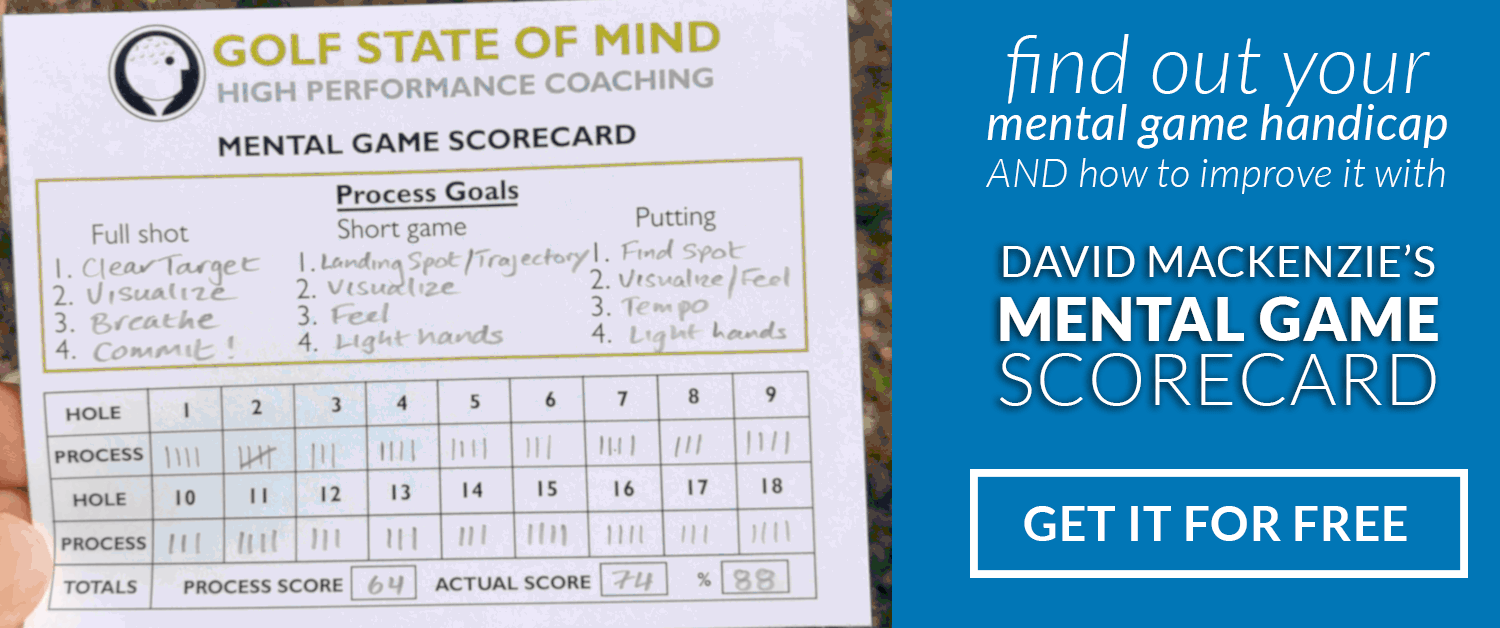
How Deep Is Your Engagement During Your Pre Shot Routine?
I saw a video earlier this week where Jason Dufner describes the purpose of his “waggle” during his pre shot routine and it compelled me to write this article.
The “best” thing to focus on during your pre shot routine
I get asked regularly, “what is the best thing is to focus on before and during a golf shot?” In this article, I’m going to give you some ideas to experiment with, so you can access your best swings more often.
Let’s assume that you’ve successfully gone through the “Thinking Phase” of the pre shot routine and you’re 100% committed to the shot you are about to hit. You’ve factored in all the information available to you (yardage, carries, wind, lie etc), and you’ve decided on the shape and trajectory of the shot. You’re about to start your walk into the ball…
The “engagement” phase of the pre shot routine
What happens next is arguably the most important part of the pre shot routine. Where your focus is during what I call “the engagement phase”, will largely determine the success of the shot. You know the intention from the thinking phase (and full commitment to it is essential), and now it’s time to get fully engaged and turn off your “thinking brain”.
From the studies that have been done on focus and the amount of thinking during the golf swing – it would appear that the world’s best players swings are about 90-95% subconscious, meaning there’s very little “thinking” immediately before and during the swing. When the “thinking brain” gets involved in the engagement phase, it kills the fluidity, athleticism and tempo of the golf swing.
I’m sure you’ve experience this yourself, you can prepare well for a shot, but if, in the final few seconds, you have doubt, remind yourself how to swing, think about where you don’t want to hit etc. you probably don’t hit your best shots.
Stop Thinking And Pay Attention To Your Senses
When I explain this concept to my students early on in the mental coaching process, I usually get asked, “well how do I turn off thinking?” The best way to really experience the present moment is to focus on what your senses are telling you. So during the final few seconds of the routine, during the engagement phase, this is what I’d like you to try. From my experience, this is the best way to turn off the “thinking brain” so you can fully access your best athletic movement.
Back to Jason Dufner…
Jason Dufner’s Pre Shot Routine
What I think he benefits from with his “waggle” is focusing on feeling of the club in his hands and not thinking during that all important final phase of the pre shot routine. In the video, which you can see here, Steve Elkington says that Dufner waggles until all systems say go! In other words, his level of engagement with the feel, tell him when to start his backswing. On that note, I get asked a lot “how long should a pre-shot routine take?” and a recent study on it concluded that time consistency of pre-shot routine was very important. Although I think this is true, I would argue that consistency of engagement was more important. A player should start their swing when they feel engaged enough to do so, and practice of this will quicken the process.
How to deepen engagement in your shots
We’re all a little different in what is best for us to focus on during the engagement phase and how we can best quiet the thinking mind and keep the athletic mind active. Some us engage more with feel, some with visual, some with sounds etc. You’ll need to experiment and find out for yourself what produces the best results.
This why the pre shot routine needs to be practiced as part of your mental training for golf – the more there is on the line (the bigger the tournament) – the more the “thinking brain” wants to get involved and tell you what the shot is worth, or where not to hit it etc. But when you practice the pre shot routine – you can deepen your engagement with the shot (via your senses), so your thinking brain is quiet and the athletic remains in control of your movement. These are skills you are developing, in the same way you develop your golf swing, so it’s important to make it part of your practice routine.
Photo by Keith Allison


